Human beings adhere to a wide variety of cultures, customs and values—and nowhere is this more apparent than in the funeral ceremonies and death rituals we perform to honor our deceased. The cultural differences in our traditions and beliefs around death can seem fascinating and even disturbing to those unfamiliar with them, but they all share the common goals of celebrating the life of the deceased and providing closure for those left behind.
Let's explore some of the most unusual funeral traditions across the globe—some of which have evolved over the centuries or been abandoned altogether, and others that have managed to stand the test of time.
The Bo people were a small, ethnic group in China that lived in the mountainous regions of Guizhou province. Their culture and lifestyle were shaped by the dramatic mountain landscape in which they lived. Although some researchers believe that a small number of the Bo people assimilated into other local minority groups and tribes over the years and may still be around today, most of the Bo people are thought to have largely disappeared during the Ming Dynasty, somewhere between 1368 and 1644.
Today, the Bo people are best known for their unique burial customs, particularly the hanging coffins they built for their dead and perched on cliffs, many of which remain to this day. This custom was believed to bring good luck to the living members of the family.
The coffins were positioned in various formations—some tucked into crevices of cliff faces, some balanced on wooden stakes, and others stacked high up into the openings of the caves.
The oldest of these coffins, dating back to the Tang dynasty, were made out of a solid piece of wood that often contained the bones of multiple bodies packed in sand. This has led some researchers to believe that when the tradition first began, the Bo people may have waited until the bodies decomposed before placing them in the hanging coffins.
There is much debate as to why the Bo people went through all the trouble of carrying their deceased up these cliffs. Some people hypothesize that they believed the spirit of the dead would return to earth, and in order for that to happen, their earthly remains must be allowed to decompose naturally. Others believe the tradition was done as a practical matter to keep animals from disturbing their loved ones' bodies.
“A skull pokes out of a coffin made out of roughly hewn planks of wood, its smooth white surface catching the reflection of the winter light flooding into the dark cave.
It's one of about 30 caskets anchored on a limestone rock about 30 meters (almost 100 feet) up the side of a cave in Guizhou province in southwestern China. It could date back hundreds of years. The coffins, inside and out, are littered with fragments of clothes, bones and ceramics…”
The Yanomami tribe is a group of about 35,000 indigenous people who inhabit somewhere between 200 to 250 nomadic villages in the Amazon rainforest.
The Yanomami people believe that death is an unnatural process that occurs when a rival tribe sends an evil spirit into their tribe. In order to protect the spirit of their dead, they perform an unusual ritual to help them pass peacefully into the spirit world.
The Yanomami people cover the deceased with leaves after they die, leaving the body undisturbed for up to 45 days. After that time, they collect the bones and cremate the body during an emotional ceremony that typically involves mourning and singing to honor the deceased.
After the cremation, the Yanomami people incorporate the deceased’s ashes into a soup made with fermented bananas that’s consumed by the entire tribe as a way to keep the deceased person’s spirit alive within the tribe and also allow them to pass peacefully into the spirit realm.
“In the religious view of the Yanomami, the soul and especially its salvation after the death are of high importance…”
Cremation is an ancient custom that became popular during Roman times because it was believed that cremated remains could travel more easily between worlds than buried remains.
In the event of cremation, the body was taken to the necropolis ("city of the dead") and put upon a funeral pyre. It was then burned, and the ashes and remaining fragments of bones and teeth were interned in a funerary urn.
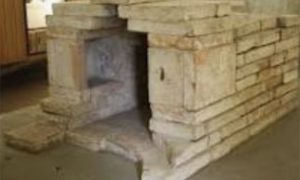
Source: World History Encyclopedia
The Vikings were seafaring people who raided and traded from the 8th to 11th centuries. They were excellent craftsmen, producing beautiful jewelry and weapons.
The most famous Viking burial custom was their funeral ship. When a loved one died, their body was placed in a boat with their most prized possessions and set on fire. The boat was then pushed out to sea so that it would burn up with the body inside. This practice was believed to ensure passage into Valhalla, where the dead would join Odin, along with other gods, if he deemed them worthy.
In addition to being an important part of Viking culture, burial ships also play an important role in modern-day historical research. Excavations at several sites have yielded preserved remains of bodies wrapped in textile shrouds and buried under layers of peat and soil. These burials have provided valuable information about Viking clothing as well as jewelry worn by women at the time of death.
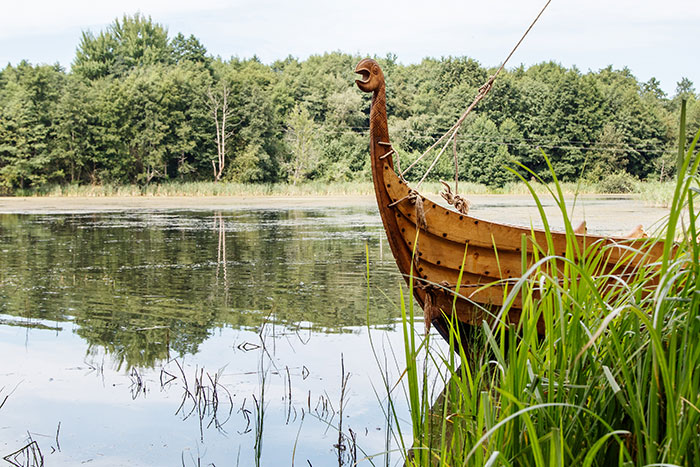
“Were Viking funerals as elaborate as their depictions in film and television make out? Dr Danica Ramsey-Brimberg explores how they buried their dead, and what the graves we’ve found can tell us about the Viking Age…”
The Norse funeral rite involved placing some kindling under a burial mound using a special tool called an ardstav or "high pole."
Once lit, it would burn for 3 days until nothing was left but ashes. Then an animal was sacrificed, and its blood was poured over the ashes. The bones were buried with the ashes in a small wooden box known as an ark or barrow box.
This box would typically have designs carved into its sides and lid with an awl (a small pointed tool) made from bone or horn. Sometimes there were also carvings on other pieces of wood set up around the grave site as markers.
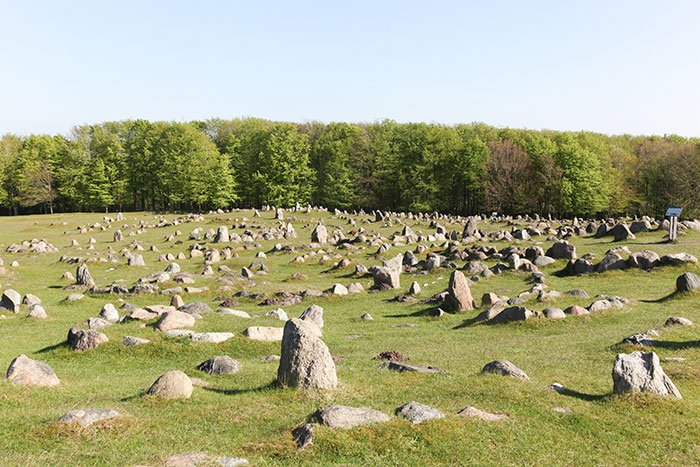
Lindholm Hills, a major Viking burial site overlooking the city of Aalborg, Denmark
In some parts of India, it's also common for bodies to be burned on open pyres in order to reduce costs and prevent epidemics from spreading through landfills, where bodies would otherwise be buried.
“One river, 18,000 feet, 1,500 miles. In the fall of 2013, photographer and videographer Pete McBride, along with professional climbers Jake Norton and Dave Morton, followed the Ganges River from snow to sea…”
The Ainu people were hunter-gatherers who lived in northern Japan until about 300 years ago—until they were conquered by the Japanese and forced to become farmers. Today, there are only around 12,000 Ainu left in Japan—less than 1 percent of the overall population.
The traditional Ainu funeral custom involved placing a dead body on a wooden platform (called an ichoku) which was then set on fire. Afterward, the dead person's ashes were collected and buried alongside other items, such as fishing gear and other tools used for hunting animals so the deceased could use them in the afterlife.
The reason for this burning ritual is unclear, but some scholars believe it may have been done as a way of avoiding disease caused by decomposing bodies in huts where people lived together communally.
AINU: Indigenous Peoples in Japan
In China, people often burn paper money at funerals as an offering to the dead. They believe that the money will help pay for their passage into heaven.
The tradition dates back to ancient times when people buried coins with their dead in order to help them pay their way through to the afterlife.
In China, people also burn paper replicas of houses, cars and other items, like televisions and phones, to send off their loved ones in style.
This custom is known as joss paper or ghost money. The belief is that these items will help the deceased enjoy a better afterlife than they would without them —kind of like how we give our loved ones gifts at weddings or baby showers.
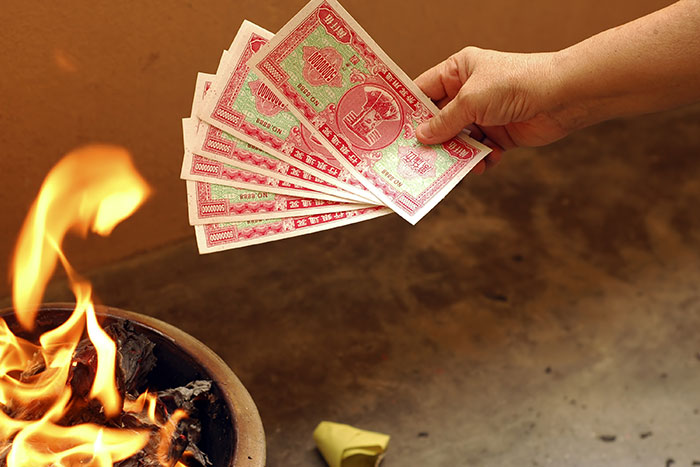
Burning Paper Food and Clothes for the Afterlife
The funerals of medieval kings in England were highly ritualized affairs. The king’s body was embalmed and dressed in royal robes before being carried through the streets of London. People in the streets sometimes pulled out the hair from their heads as a symbol of mourning.
The king's body would be taken to Westminster Abbey, where it would lie in state until the funeral service. The coffin was made of wood and covered with velvet or cloth-of-gold, and inside were placed the king's crown, scepter and sword. The coffin was carried into the abbey on the shoulders of earls, who were dressed in black robes trimmed with fur. A procession followed them into the churchyard, where they placed the coffin on a hearse, which was used to transport the body after the service was finished.
During the funeral, clerics chanted psalms around the body while monks read aloud from scripture or other religious texts. After several hours of this, people would arrive at Westminster Abbey from all over England and be allowed their turn to mourn.
William the Conqueror invaded England in 1066 and became the first Norman king. After a tumultuous reign, he died in 1087 after suffering a severe intestinal rupture from getting thrown against a saddle pommel while on a horse.
With the drama about his succession, King William's funeral became an even bigger drama. The chronicler Orderic Vitalis recorded that the room where his body lay in state was looted, leaving the king's body naked on the floor. It took more days for the body to be cleaned up. By this time, the dead king's body was overly ripe and bloated and wouldn't fit into his sarcophagus.
How would you put a bloated body into a sarcophagus? By force, of course. Easy, right?
The Strange Funeral of William the Conqueror
According to the chronicler Orderic Vitalis, that was exactly what the monks did. To quote the Orderic, "the swollen bowels burst, and an intolerable stench assailed the nostrils of the bystanders and the whole crowd."
Nothing can cover up the smell. The mourners suffered silently and as quickly as possible through the king's funeral.
Indonesia is a country with a vast array of cultures and traditions. The country's population is made up of many ethnicities and religions, including Islam, Christianity, Hinduism and Buddhism.
Indonesians are known for their respect for the dead, and their customs around funerals reflect this. In fact, there are many different ways to say goodbye and pay respect to a loved one in Indonesia, including taking their body to a mortuary house before the funeral begins.
Those who practice this custom take the deceased’s body from their home to this special building so it can be properly prepared for their burial. This process takes place over several days and includes bathing and dressing the body as well as giving it a final haircut and shave.
The family often prepares food to be served at this time and gathers flowers and other items to be placed around the body. This tradition was first introduced by Muslims in Indonesia during the 13th century when they arrived from India after migrating from Mecca.
Living with the dead in Indonesia - BBC News
Nihang is a sect of Sikh warriors who are known for their courage and strength. The term Nihang means “wet,” referring to the fact that they remain in an intoxicated state (intoxicated with God's love) at all times.
Nihang funerals are a spectacular sight to behold. The Nihangs perform the last rites of their brethren with great zeal and passion, displaying a rare display of discipline and military precision.
The Nihang funeral ceremony is one of the most elaborate and colorful processions that can be seen in India. It takes place at night—when all the family members gather near the body of the deceased person. The body is wrapped in saffron-colored cloth and placed on a raised platform known as the “Saropaan da Takht” (throne).
The dead body is then carried on horseback by warriors who chant religious hymns while they proceed toward their final destination, where the cremation takes place. This funeral ceremony can last up to a week and often includes singing, dancing, feasting and fireworks.
Despite growing power of the Sikh misls (fighting units) in the 18th century, the Akali Nihang bands continued to renounce power and cultivated self-discipline and austerity.
Cremating or burying? You have options if you were the dead in ancient Rome.
Ancient Romans used to keep dead bodies in their homes until they were buried. When they finally buried them, they would sometimes place coins under their tongues as payment for Charon, the ferryman who they believed took souls across the river Styx into Hades.
Charon: The Ferryman of the Underworld
In many countries, bodies are buried at sea as a way to ensure that they don't get lost or forgotten. This practice was especially common during times when there were no proper burial facilities available and people had to bury their loved ones wherever they could find space for them.
Today sea burials are still popular among sailors and others who live near the ocean because it allows the deceased to stay connected to this source that brought them so much joy throughout their lives.
In some places in China and India, after a person dies, they are taken to the top of a mountain and dropped over a cliff. Interestingly, this practice is done as a sign of respect for the deceased.
Many who practice this custom believe that when the deceased falls, their body will be caught by the gods, who will take care of them in the afterlife. In Indonesia, they believe that if they drop their loved one off a cliff, they will fly into heaven with the help of giant birds. It’s also believed that this process helps release any remaining pain or bad energy from their souls so they can move on peacefully.
The Tibetan sky burial is a funeral practice in which a human corpse is dismembered by a Burial Master, after which it is taken to a high altitude where it can be eaten by vultures. Those who practice the ritual believe it allows the deceased to be taken to the heavens, where they will remain until they’re later reincarnated.
Similar rituals are also practiced by some in Nepal, parts of Asia and Mongolia. While it may seem barbaric to outsiders, those who dispose of their dead in this manner see it as a way to continue the circle of life and honor their loved ones who would otherwise be buried alone in the ground and forgotten.
Sky burials in Tibet
In ancient China, families traditionally cut the deceased person's fingernails after their death. They would cut off the nails before the body was buried or cremated, then wrap the nails in paper or cloth and bury them along with the body. This was done as an offering to the deceased’s ancestors in the afterlife.
The Egyptians believed that death was merely a doorway between this life and another one—only by performing proper rituals would they pass freely through that doorway without fear of being trapped on either side.
Mummies aren't just an ancient Egyptian practice—they were also common among some Native American tribes, such as the Navajo, Hopi and Pueblo people who lived throughout North America. After someone died, they were wrapped up in layers of cloth with herbs inside them before being placed underground or hung from trees so they could "breathe" while drying out completely over time.
Ancient mummification process revealed
The Dayaks of Borneo are known for their elaborate burial rituals. When a person dies, they dig up their body after 4 years and dance with it in celebration. This custom is believed to keep evil spirits away from the village.
In some parts of Africa, including Ghana and Nigeria, human skulls are commonly used as vessels for libations during ancestor worship ceremonies or "paterno-genetic" rites.
These ceremonies often feature large groups of men who dance together while holding onto each other's skulls. The skulls are decorated with cowries (shells) and cow dung before being used in public rituals that can last for several days at a time.
Local people believe that dancing with the corpses of their loved ones, called "famadihana," will bring them closer to the deceased and show their gratitude for all that they did for them during their life. During this “dance with the dead,” the body is exhumed and wrapped in cloth before the ritual dance is performed, and it gets returned to its grave.
The practice is widespread across Madagascar, but it’s more common in rural areas. However, it can also be seen in some cities such as Antananarivo and Toamasina, where many people believe that dancing with the corpses helps them to heal faster and get rid of pain.
The people of Fiji used to practice a horrific and morbid tradition referred to as “Carpeting the grave.” The people of Fiji believed that when a married man died, his wife should accompany him to the grave so he wouldn’t have to face death alone.
It was the duty of the brother of the deceased to strangle his deceased brother’s wife so she could die honorably next to her husband and “carpet” his grave.
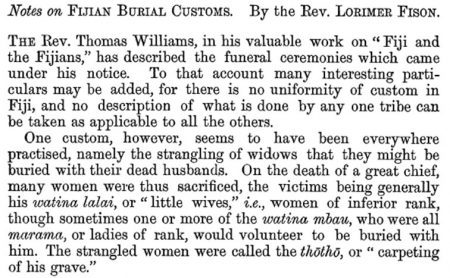
Source: https://www.jstor.org/journal/janthinstgreabri
Irish funerals can be a celebration of life, as well as a chance to mourn the loss of a loved one. The Irish believe that death is not the end but just another step in life's journey.
At the start of the funeral, which is usually held at home, the coffin is carried into the house by pallbearers or hired professionals. The deceased's body is then laid out in the front room, where family and friends gather to pay their respects before burial.
The celebration can last anywhere from 3 days to 2 weeks. During this time, friends and neighbors will come over frequently to share memories and stories about the deceased.
Popular Irish funeral song, The Parting Glass performed
by Choral Scholars of University College Dublin
In South Korea, their funeral rituals and traditions are so elaborate that they've been compared to "a full-scale theatrical performance."
The funeral begins with an elaborate procession, including cars decorated with flowers and banners that carry the coffin and dancers who perform traditional Korean dances.
Afterward, there's a memorial service known as Mul-Chi-Gong-Su or the "Mourning Ritual," where attendees pay their respects by bowing three times at the altar before leaving the building. Family members of the deceased wear white mourning clothes, while other attendees wear black or dark blue outfits.
Finally, there's another procession through town before heading to the burial ground, where elaborate food and drinks are prepared for those attending the funeral ceremony.
Mourning attire varies around the world. Just like each region has its own fashion sense, it also has its own fashion rules for funerals. In some countries, people wear white to show their respect; in others, they wear black to symbolize the loss of life. Regardless of the minor differences, the point of mourning attire is to express grief openly and show respect to the deceased.
Some cultures have very strict guidelines about what clothes people can wear to a funeral, but in other places, you can wear whatever you want.
Black is the most common color for funeral garments—in fact, it's traditional in some cultures for observing mourners to wear only black clothing for an entire year after a loved one dies. Some countries in Europe have strict rules about how long one must mourn; for instance, in Spain, you must wear black for at least 2 years after a loved one dies.
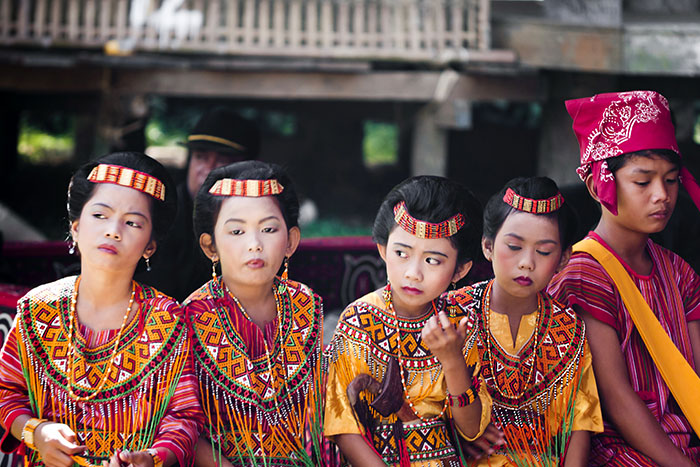
Children dressed with traditional toraja clothes during a funeral ritual in
Indonesian village on 15th August 2010
Cremation ceremony for the king
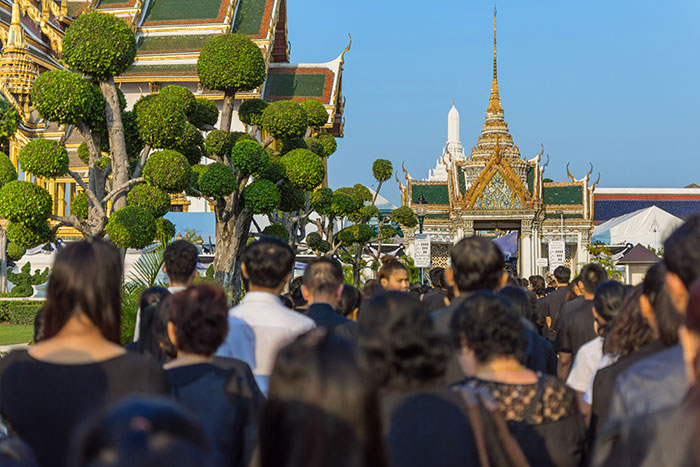
Bangkok, Thailand - March 11, 2017: Thai mourners wearing black color waiting in The Grand Palace to pay respect to their beloved King Rama 9
In Europe, mourners often wear plain-colored clothing and a black ribbon on their left arm or upper left chest. The ribbon is sometimes worn for a set period of time, sometimes until the burial, which may be months after the death.
In China and Taiwan, mourning clothes are typically black with white trim, but colors indicate the time frame of the mourning process. Black indicates that the mourner is still in deep mourning; some will never leave this stage and may consider themselves a dead person while they grieve. White indicates 3 to 9 months of mourning; blue is 9 months to 1 year; gray or silver is 1 to 3 years; green is 3 to 7 years; lavender is 7 years or more.
In Japan, people wear black or white at funerals—white being a symbol of purity and the traditional color of mourning, black as a sign of respect.
In Singapore and Malaysia, there's no set color—it depends on who dies and what their rank was in life. Some people wear all white after a death to signify the end of an era; others don't wear any particular color at all.
Funeral service for former Japanese Prime Minister Shinzo Abe
Funerals and death rituals around the world vary significantly from culture to culture and change over time. The ways in which each culture approaches death can provide interesting insights into their values and beliefs about what happens in the afterlife.
By exploring these differences, we can start to examine our own traditions and thoughts around death to help us decide what kind of ceremonies would best honor our own lives and the lives of our loved ones.
